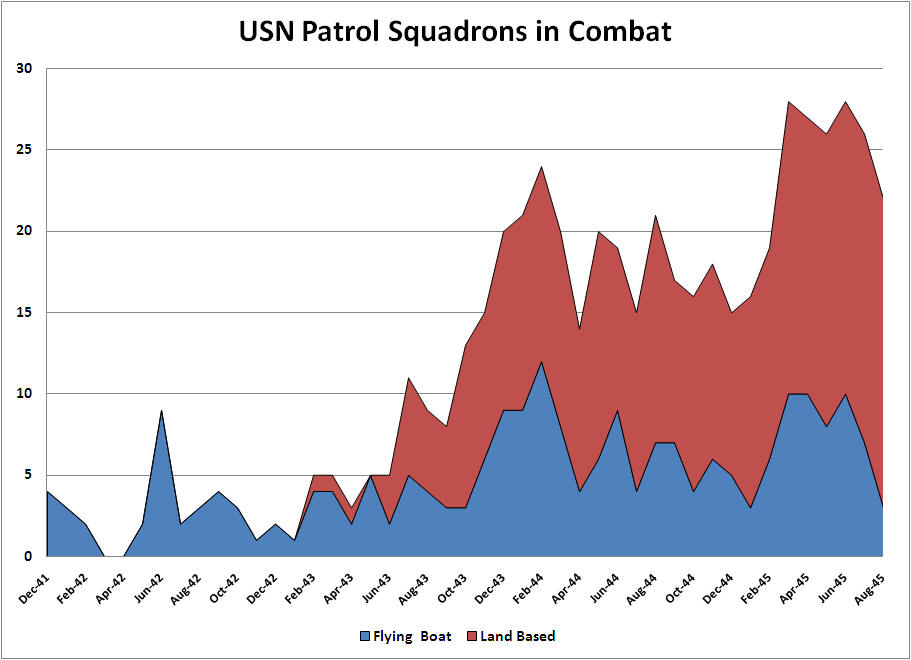During the Pacific Air War the U.S. Navy maintained and developed a large force of maritime patrol aircraft and flying boat squadrons. These units performed reconnaissance and sea control missions. Long range flying boats included the PBY Catalina, the PBM Mariner, and the PB2Y Coronado. Long range land based aircraft included the twin engine PV Ventura and the four engine PB4Y Liberator/Privateer. The OS2U Kingfisher was the most commonly used “in-shore” short range float plane. In addition there was a land based version. As the war progressed surplus SBD Dauntless Dive Bombers were commonly used for “in-shore” patrol. By 1945 nearly 30 long range patrol squadrons were in action against the Japanese. Several additional squadrons were performing routine reconnaissance missions in rear areas.

While individual squadrons rotated through combat tours of definite length, they were controlled by Fleet Air Wing Headquarters that were associated with a particular geography or mission.[1]
-
Fleet Air Wing 1 was initially stationed at Pearl Harbor and subordinated to Patrol Wing 2. It moved to Noumea in September 1942 and became the administrator of patrol squadrons in the South Pacific. From 15 October 1944 it was the forward deployed in the Central Pacific and operated in support of the 3th and 5th Fleets .
-
Fleet Air Wing 2 was stationed at Pearl Harbor throughout the war. For most of the war it functioned to prepare squadrons for front line service and to garrison rear areas.[2]
-
Fleet Air Wing 4 moved to Alaska in May 1942 and remained in the North Pacific throughout the war.
-
Fleet Air Wing 10 was stationed in the Philippines at the onset of war. It retreated to the west coast of Australia. In 1944 it returned to the Philippines serving as an element of Admiral Kinkaid’s 7th Fleet and providing units to General Kenny’s Allied Air Force.
-
Fleet Air Wing 17 was established on the East Coast of Australia in September 1943. It advanced to the Philippines as an element of Admiral Kinkaid’s 7th Fleet and providing units to General Kenny’s Allied Air Force.
-
Fleet Air Wing 18 was established on the Marianas in May 1945.
As the allies advanced invasion by invasion, USN tender based flying boat squadrons were most often the first units to be based at the new location. They provided local antisubmarine coverage, day and night maritime reconnaissance and strike capability, and air/sea rescue service in the combat area. They were supplemented/relieved by land based patrol aircraft when airfield space became available. By this process Allied sea control was extended across the Pacific.
[1] The title Fleet Air Wing was adopted 1 November 1942; the previous title was Patrol Wing. The numbering was consistent. For example Patrol Wing 1 became Fleet Air Wing 1.
[2] After Fleet Air Wing 1 left the South Pacific, Fleet Air Wing 2 was operated as two groups associated with the South Pacific and Central Pacific respectively.